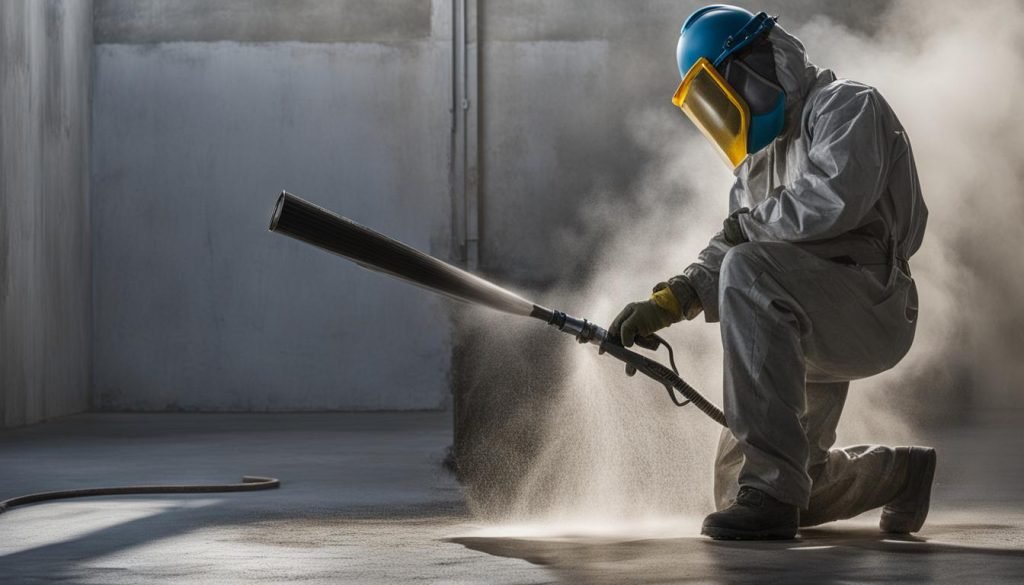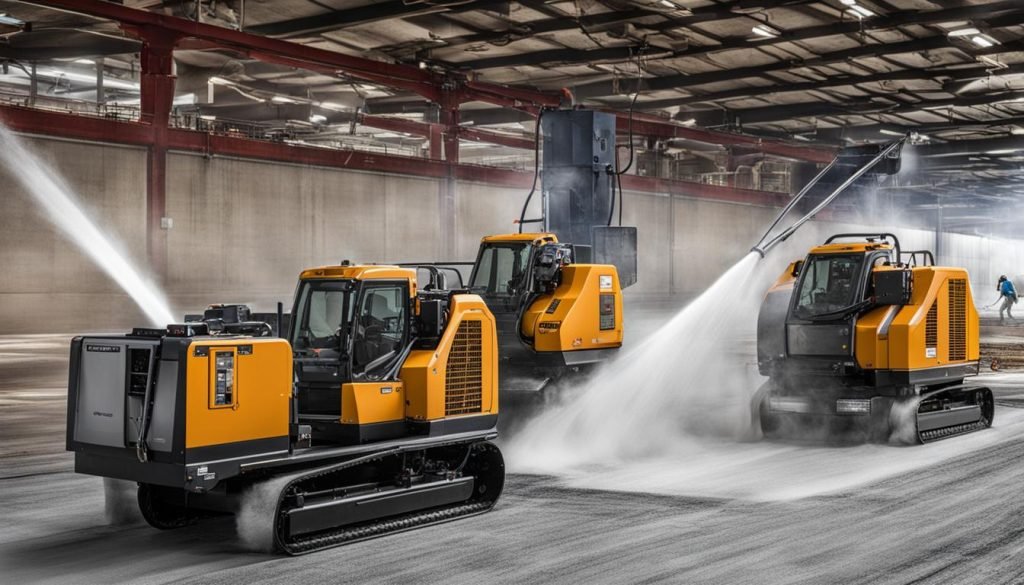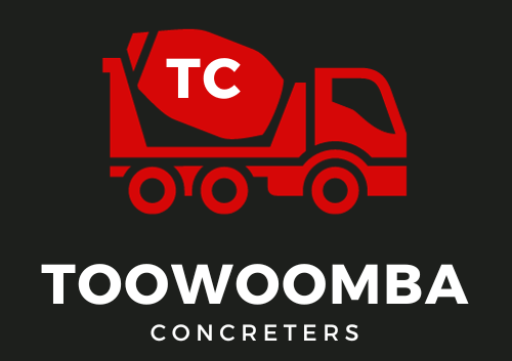Spray on concrete, also known as shotcrete or gunite, is a construction technique that involves projecting concrete or mortar through a hose at high velocity onto a surface. This method was invented by Carl Akeley in 1907 and has since been used for various applications in construction. Spray on concrete can be reinforced with steel rods, mesh, or fibers, and it is commonly used for its high compressive strength, durability, water resistance, and frost resistance. Click here for Your go-to experts for small concrete jobs in Toowoomba, ensuring high standards. Enrich your concrete skills by checking out this comprehensive guide on How to Do Exposed Aggregate Concrete Driveway: Techniques and Design. Explore valuable insights into techniques and design considerations to achieve a stunning exposed aggregate concrete driveway, perfect for your next project.
Key Takeaways:
- Spray on concrete, also known as shotcrete or gunite, is a construction technique that involves projecting concrete or mortar through a hose at high velocity onto a surface.
- The method was invented by Carl Akeley in 1907 and is commonly used for its high compressive strength, durability, water resistance, and frost resistance.
- Spray on concrete can be reinforced with steel rods, mesh, or fibers.
- It is suitable for complex shapes and structures and offers rapid strength gain, making it ideal for time-sensitive projects.
- Spray on concrete has a wide range of applications in construction, including excavation stabilization, structural concrete placement, and repair work.
History of Spray on Concrete
The history of spray on concrete can be traced back to 1907 when Carl Akeley revolutionized the world of construction with his invention of the “cement gun.” Akeley developed this innovative technique while working on the restoration of the Field Columbian Museum in Chicago. His invention involved using compressed air to propel a dry mixture of cement and sand through a hose, with water being added at the nozzle for hydration.
This groundbreaking method, initially known as gunite, quickly gained recognition for its efficiency and versatility. In 1911, Akeley patented the gunite process, marking a significant milestone in the history of spray on concrete.
As time progressed, advancements were made to refine the application process. The dry-mix process initially used in gunite was gradually replaced by the wet-mix process. In the wet-mix process, pre-mixed concrete is pumped to the nozzle, and compressed air is used to propel it onto the desired surface. This method offers better control over the mix consistency and ensures a more uniform application.
Today, the wet-mix process is the preferred method for spray on concrete applications, offering improved performance and reliability. It has become an integral part of modern construction projects, enabling efficient and precise concrete placement for various applications.
Advantages of Spray on Concrete
Spray on concrete offers a plethora of benefits that make it a valuable construction technique. Let’s explore some of the advantages it brings to the table:
1. Formwork-Free Concreting
One of the key advantages of spray on concrete is its ability to be applied without the need for formwork. This makes it highly suitable for creating complex shapes and structures that traditional concrete pouring methods may struggle with. The versatility it offers opens up new possibilities for architects and engineers to design innovative and visually striking projects.
2. Excellent Compaction and High Density
When spray on concrete is applied, the high velocity of the process ensures excellent compaction and results in a high-density concrete mixture. This leads to enhanced properties such as high compressive strength and low permeability, making it a durable and long-lasting solution for construction projects.
3. Rapid Strength Development
Another notable advantage of spray on concrete is its ability to gain strength rapidly. This characteristic makes it ideal for time-sensitive projects where quick setting and early strength development are crucial. By utilizing spray on concrete, construction timelines can be significantly shortened without compromising structural integrity.
4. Enhanced Adhesion and Bond Strength
Spray on concrete naturally exhibits excellent adhesion and bond strength to most surfaces. This eliminates the need for additional bonding agents or coatings, reducing both the time and cost associated with surface preparation. The strong bond created between the existing surface and the spray on concrete layer ensures long-term structural stability and performance.
Overall, the advantages of using spray on concrete make it a versatile and reliable choice for a wide range of construction applications. The ability to work without formwork, achieve high density, rapid strength gain, and enhanced adhesion make it an efficient and cost-effective solution for projects of all sizes and complexities.
Applications of Spray on Concrete
Spray on concrete, with its versatility and durability, finds extensive use in various construction applications. It offers a reliable solution for a wide range of projects, including excavation stabilization, reinforcement of temporary and permanent excavations, stabilizing underground parking structures, and the creation of large waterproof enclosures. The ability of spray on concrete to adhere to any surface type or shape, including vertical and overhead areas, makes it a preferred choice for many construction professionals.
Here are some notable applications of spray on concrete:
- Excavation Stabilization: Spray on concrete is commonly used for lining tunnel walls in mines, subways, and automobile tunnels. It provides stability, strength, and water resistance, ensuring the safety and durability of the excavated structures.
- Reinforcing Excavations: Spray on concrete is effective in reinforcing both temporary and permanent excavations. It enhances stability, prevents soil erosion, and provides structural support in challenging excavation projects.
- Waterproof Enclosures: The high water resistance of spray on concrete makes it ideal for creating large waterproof enclosures, such as swimming pools, water storage tanks, and reservoirs. It forms a durable barrier against water penetration, ensuring the integrity of the enclosed structure.
- Underground Parking Structures: Spray on concrete plays a vital role in stabilizing and reinforcing underground parking structures. It provides strength, durability, and resistance against chemicals and vehicle traffic, ensuring the long-term performance of the parking facility.
- Structural Concrete Placement: Spray on concrete is suitable for structural concrete placement. It can be used to construct walls, beams, columns, and other structural components, providing high compressive strength and excellent bonding properties.
- Mining Applications: In the mining industry, spray on concrete is used for various applications, including tunnel lining, shaft construction, and stabilizing rock formations. It offers stability, strength, and resistance to harsh mining conditions.
- Repair Work: Spray on concrete is also used extensively for repair work in the construction industry. It can be applied to damaged concrete structures, such as bridges, buildings, and highways, to restore their strength and durability.
These are just a few examples of the diverse applications of spray on concrete. Its versatility, strength, and durability make it an invaluable material in the construction industry, facilitating the successful completion of complex projects with exceptional results.
Spraying Techniques for Spray on Concrete
Spray on concrete can be applied using different techniques depending on the project requirements. The two main techniques are the wet-mix process and the dry-mix process.
Wet-Mix Process:
In the wet-mix process, pre-mixed concrete is pumped to the nozzle, and compressed air is introduced to propel it onto the surface. This technique offers precise control over the concrete mix and allows for better workability and placement. The wet-mix process is commonly used for large-scale projects where a continuous and homogeneous spray application is required. Skilled nozzle operators are needed to ensure accurate spraying and achieve the desired results.
Dry-Mix Process:
In the dry-mix process, the dry ingredients, including aggregates, cement, and additives, are placed into a hopper. They are then conveyed pneumatically through a hose to the nozzle, where water is added. This technique is often used for small-scale projects or in situations where on-site mixing is more convenient. The dry-mix process requires skilled operators to control the mix consistency and ensure proper hydration. It is essential to achieve the right balance between the dry and wet components for optimal performance.
Manual and Mechanized Application:
Both the wet-mix and dry-mix techniques can be performed manually or with the help of mechanized equipment. Manual application requires skilled nozzle operators who can control the flow of the material, adjust spray patterns, and ensure even coverage. Mechanized equipment, such as spraying machines, can provide more consistent and efficient application, especially for large projects. These machines typically have duplex pumps that enable a continuous and uniform spray. Skilled operators are still needed to oversee the process, monitor equipment performance, and make necessary adjustments.

The choice of spraying technique depends on various factors, including project size, complexity, accessibility, and time constraints. It is important to evaluate the specific requirements of each project and select the most appropriate technique accordingly.
| Technique | Advantages | Disadvantages |
|---|---|---|
| Wet-Mix |
|
|
| Dry-Mix |
|
|
Equipment for Spray on Concrete
When it comes to spray on concrete applications, having the right equipment is crucial for achieving optimal results. Various machines and tools are available to ensure a continuous and homogeneous spray application. One commonly used machine is the duplex pump, which is specifically designed for working with wet mixes. These machines provide an efficient and reliable solution for spray on concrete projects.
The equipment used for spray on concrete can be controlled manually or remotely, depending on the project requirements. Some machines come with mechanical arms and handheld remote control, allowing operators to have greater control and precision during the application process. This versatility makes it easier to adapt to different project conditions and deliver a consistent spray pattern.
Different nozzle configurations are also used in spray on concrete applications. The choice of nozzle depends on factors such as the volume of spray required, the type of mix, and the accessibility of the application area. Nozzle designs may vary, including adjustable nozzles, rotatable nozzles, or specialized nozzles for specific surface conditions.
When selecting the equipment for spray on concrete, it is important to consider factors such as the size and complexity of the project, the type of mix being used, and the desired application rate. Taking these factors into account will ensure that the right equipment is chosen to meet the specific requirements of each project.
“Having the right equipment is essential for achieving precise and consistent results in spray on concrete applications.”
Below is a table summarizing the different types of equipment commonly used in spray on concrete projects:
| Equipment | Description |
|---|---|
| Duplex Pump | A machine specifically designed for working with wet mixes, ensuring a continuous and homogeneous spray application. |
| Remote Control | Handheld remote control for operating the spray equipment, providing greater precision and control for operators. |
| Mechanical Arms | Allows for manual control and adjustment of the spray equipment, ensuring consistent application across different surfaces. |
| Adjustable Nozzles | Nozzles that can be adjusted to control the spray pattern and flow rate, allowing for customized application. |
| Rotatable Nozzles | Nozzles that can be rotated to adapt to different surface conditions, ensuring even coverage and distribution of the spray. |
| Specialized Nozzles | Nozzles designed for specific surface conditions, such as vertical or overhead spraying, to achieve optimal results. |
Having the right equipment and understanding its capabilities is essential for achieving precise and consistent results in spray on concrete applications. Whether it’s a duplex pump for wet mixes, remote control for increased precision, or specialized nozzles for unique project conditions, each piece of equipment plays a crucial role in delivering high-quality spray on concrete.

Material Considerations for Spray on Concrete
In spray on concrete applications, the selection of materials is crucial to ensure the desired properties and performance of the final product. Various components are involved, including aggregates, cement, water, additives, and reinforcement fibers.
Aggregates
The choice of aggregates can significantly impact the properties of the sprayed concrete. Aggregates vary in size and may include materials such as crushed stone, gravel, or sand. The selection of aggregates depends on the specific mix design and desired characteristics of the concrete.
Cement
Cement is a vital component of spray on concrete as it provides the binding properties. It reacts with water to form a paste that hardens and binds the aggregates together. The type and quality of cement used can influence the strength, durability, and workability of the sprayed concrete.
Water
Water is crucial in hydrating the cement and making the mix workable. The amount of water used should be carefully controlled to achieve the desired consistency without compromising the strength and durability of the sprayed concrete. A proper water-to-cement ratio is essential to ensure optimal performance.
Additives and Admixtures
Additives and admixtures are incorporated into the mix to control the properties of the sprayed concrete and enhance its performance. Common additives include superplasticizers, which improve workability and reduce water content, setting retarders, which slow down the setting time, and accelerators, which expedite the curing process. These additives allow for greater control over the behavior of the mixture.
Fibers
Fibers can be added to the mix for added reinforcement. Fiber-reinforced spray on concrete exhibits improved toughness, resistance to cracking, and ductility. Different types of fibers, such as synthetic fibers or steel fibers, can be used depending on the specific requirements of the project.
Overall, the materials used in spray on concrete play a significant role in determining the strength, durability, and performance of the finished product. Proper selection and careful consideration of these materials are essential to achieve the desired results in various construction applications.
Health and Safety in Spray on Concrete Applications
When working with spray on concrete, health and safety considerations are of utmost importance. Proper handling of cement and other materials is essential to minimize health risks associated with exposure. To ensure the well-being of workers, adequate ventilation and personal protective equipment should be used to protect against dust, fumes, and other potential hazards. Moreover, proper training and certification of nozzle operators are crucial to ensure safe and efficient application.
Following industry guidelines and regulations is vital to maintain a safe working environment throughout the entire spray on concrete process. By adhering to these standards, workers can minimize the risk of accidents and potential harm. It is essential that construction companies prioritize the well-being of their personnel and implement stringent safety protocols.
| Health and Safety Measures | Description |
|---|---|
| Adequate Ventilation | Ensure proper ventilation in the work area to minimize dust and fume exposure. |
| Personal Protective Equipment (PPE) | Provide appropriate PPE, such as masks, goggles, gloves, and protective clothing, to protect workers from potential hazards. |
| Training and Certification | Ensure that nozzle operators receive proper training and certification to operate the equipment safely and effectively. |
| Compliance with Regulations | Adhere to industry guidelines and regulations to maintain a safe working environment. |
By prioritizing health and safety in spray on concrete applications, construction professionals can create a secure working environment and prevent accidents and injuries. Implementing proper protocols, providing necessary equipment, and ensuring appropriate training can significantly contribute to the overall well-being and productivity of workers.
Quality Control and Testing for Spray on Concrete
Ensuring the quality and durability of spray on concrete is paramount in construction projects. Rigorous quality control measures and comprehensive testing procedures are essential to validate the performance and integrity of the finished product. By adhering to stringent standards and specifications, builders can confidently deliver superior results.
Raw Material Specifications and Mixing Procedures
To maintain the desired quality of spray on concrete, it is crucial to source raw materials that meet the required specifications. Aggregates and cement should be carefully selected, considering factors such as size, quality, and compatibility. Proper batching and mixing procedures must be followed to ensure a consistent and homogeneous mix. This meticulous approach in material selection and mixing provides the foundation for high-quality spray on concrete.
On-site Quality Control Testing
On-site quality control testing is a critical step in verifying the strength and performance of spray on concrete. Various testing methods can be employed, including:
- Needle Penetration: This test involves measuring the resistance of the sprayed concrete to a penetrating needle, which provides an indication of its hardness and strength.
- Stud-Driving: Stud-driving tests evaluate the bond strength of the shotcrete by driving steel studs into the sprayed surface and measuring their pull-out resistance. This test determines the degree of adhesion between the concrete and the substrate.
- Drill Core Testing: Taking drill core samples from the sprayed concrete allows for compressive strength testing in a laboratory setting. This method provides a comprehensive assessment of the concrete’s strength and durability.
Laboratory Testing
In addition to on-site testing, laboratory analysis can be conducted to assess the properties of the spray on concrete mix and verify its compliance with industry standards and specifications. The laboratory testing may include:
- Compressive Strength Testing: This test determines the maximum load the concrete can bear before it fails under compression. It assesses the mix’s strength and load-bearing capacity.
- Flexural Strength Testing: This test evaluates the load-bearing capacity of the sprayed concrete under bending forces, providing insights into its durability and resistance to cracking.
- Permeability Testing: Permeability testing measures the ability of the concrete to resist water penetration. It assesses the mix’s resistance to moisture and helps ensure its long-term durability.
Compliance and Quality Assurance
Compliance with relevant standards and specifications is crucial for ensuring the quality and performance of spray on concrete. Accredited testing laboratories can provide comprehensive reports and certifications that validate the mix’s compliance with industry guidelines. Implementing a robust quality assurance program that includes regular inspections and audits helps maintain consistency and reliability throughout the construction process.
Summary of Quality Control and Testing Methods
| Testing Method | Application |
|---|---|
| Needle Penetration | Assessing hardness and strength |
| Stud-Driving | Evaluating bond strength and adhesion |
| Drill Core Testing | Compressive strength analysis |
| Compressive Strength Testing | Determining load-bearing capacity |
| Flexural Strength Testing | Evaluating resistance to bending forces |
| Permeability Testing | Assessing resistance to water penetration |
Design and Specification for Spray on Concrete
When it comes to designing and specifying spray on concrete, careful consideration of project requirements and conditions is essential. Factors such as desired strength, durability, and surface finish play a crucial role in determining the design approach. Whether opting for the wet-mix or dry-mix process, various considerations must be taken into account, including project size, accessibility, and time constraints.
To ensure the desired performance and quality of the sprayed concrete, clear specifications should be defined. These specifications lay out the requirements for the mix design, application technique, and finish. Consulting with experienced professionals and following industry standards and guidelines is of paramount importance during the design and specification process.
Designing and specifying spray on concrete involves making informed decisions that align with project goals and objectives. Working with experts in the field helps ensure that the final product meets the desired performance standards and delivers the expected results.
Factors to Consider in the Design Process
- Strength: Determine the required strength of the spray on concrete based on the application. This will influence the mix proportions and the choice of reinforcing materials, such as steel rods, mesh, or fibers.
- Durability: Consider the anticipated environmental conditions and exposure to factors like moisture, chemicals, and freeze-thaw cycles. Specify the appropriate mix design, including admixtures and additives, to enhance durability.
- Surface Finish: Define the desired surface finish, whether smooth, textured, or exposed aggregate. This will inform the choice of aggregates, surface treatments, and finishing techniques.
- Project Constraints: Take into account factors such as project size, timeline, and accessibility. These constraints may influence the choice between the wet-mix and dry-mix process, as well as the equipment and application techniques used.
- Quality Assurance: Implement quality control measures to ensure the desired performance and consistency of the sprayed concrete. This may include conducting laboratory testing, monitoring mix proportions, and verifying compliance with relevant standards and specifications.
By considering these factors and working closely with experts, the design and specification process for spray on concrete can result in a successful and durable end product. With proper design and specifications in place, spray on concrete can meet the unique requirements of any construction project.
Conclusion
Spray on concrete, also known as shotcrete or gunite, is a game-changing construction technique that has revolutionized the industry. With its ability to be sprayed onto any surface, whether it’s a horizontal, vertical, or overhead area, spray on concrete provides limitless design possibilities and flexibility. Its remarkable compressive strength, durability, and water resistance make it a reliable choice for a wide range of construction projects.
However, to ensure the success and longevity of spray on concrete applications, it is crucial to follow proper procedures and guidelines. The use of appropriate equipment, such as machines with duplex pumps, and the selection of quality materials are essential for achieving optimal results. Adhering to health and safety regulations, as well as implementing rigorous quality control measures, are equally important in maintaining a safe and high-quality construction process.
Whether it’s for excavation stabilization, structural concrete placement, or repair work, spray on concrete continues to prove its value in the construction industry. Architects, engineers, and contractors can rely on this innovative technique to deliver impressive results that meet the highest standards of strength, durability, and performance. With its exceptional versatility and reliability, spray on concrete is here to stay as a preferred choice for various construction applications.
FAQ
What is spray on concrete?
Spray on concrete is a construction technique that involves projecting concrete or mortar through a hose at high velocity onto a surface.
What are the advantages of spray on concrete?
Spray on concrete offers advantages such as the ability to work without formwork, high compressive strength, rapid strength gain, enhanced adhesion, and bond strength.
What are the applications of spray on concrete?
Spray on concrete is commonly used for excavation stabilization, lining tunnel walls, reinforcing temporary and permanent excavations, stabilizing parking structures, and structural concrete placement.
What are the spraying techniques for spray on concrete?
The two main techniques for spray on concrete are the wet-mix process and the dry-mix process, which can be performed manually or with mechanized equipment.
What equipment is used for spray on concrete?
Machines with duplex pumps and different nozzle configurations are commonly used for spray on concrete applications.
What materials are used in spray on concrete?
Spray on concrete uses aggregates, cement, water, additives, and fibers to achieve the desired properties and performance.
What health and safety considerations are important for spray on concrete applications?
Proper handling of materials, ventilation, personal protective equipment, and training for nozzle operators are crucial for safety in spray on concrete applications.
How is quality control and testing done for spray on concrete?
Quality control involves testing the strength of young shotcrete, while laboratory testing may be conducted to assess the properties of the mix and verify compliance with standards.
What is the design and specification process for spray on concrete?
The design and specification of spray on concrete depend on project requirements, factors such as strength and durability, and the choice between wet-mix and dry-mix processes.



